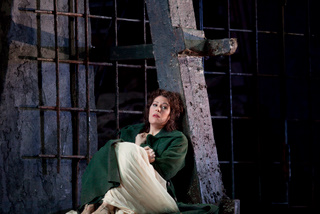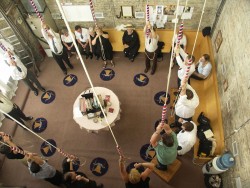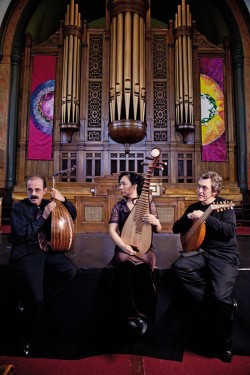 It was almost three years ago that soprano Sondra Radvanovsky walked out onto the stage of the Luna Gala at Roy Thomson Hall and sang the Bolero from Verdi’s I vespri Siciliani. The audience was enthralled – and puzzled. Who was Sondra Radvanovsky, and what was she doing at a gala celebrating Canadian opera singers?
It was almost three years ago that soprano Sondra Radvanovsky walked out onto the stage of the Luna Gala at Roy Thomson Hall and sang the Bolero from Verdi’s I vespri Siciliani. The audience was enthralled – and puzzled. Who was Sondra Radvanovsky, and what was she doing at a gala celebrating Canadian opera singers?
“People came up to me asking where I came from,” Radvanovsky told me when I spoke with her in New York City this past January.
“I told them that I’ve been living in Oakville for six years.’” I was sitting with Radvanovsky in a café close to Lincoln Center, where she had sung the opening performance of Verdi’s Stiffelio with the Metropolitan Opera the previous night. Just down the street was the apartment she was staying in with her Canadian husband, Duncan Lear.
Radvanovsky hasn’t sung here in Toronto again, in concert or in opera. But that is going to change. On March 20 she is giving a concert in Roy Thomson Hall with baritone Dmitri Hvorostovsky, a frequent and much-loved visitor to Toronto. On May 8 she sings the Verdi Requiem with the Grand Philharmonic Choir under Howard Dyck. And next October she opens the new season of the Canadian Opera Company with her first Aida.
Radvanovsky is regarded as the leading Verdi soprano of her generation. Her repertoire is well-stocked with Verdi operas, including what’s become her signature role, Leonora in Il Trovatore, which she has performed something like 165 times. Yet she also sings many other operas, ranging from Eugene Onegin and Rusalka to Cyrano de Bergerac, Manon Lescaut and Susannah, with Maria Stuarda and Norma coming up.
After living here for nine years, Radvanovsky is still widely referred to as an American singer. Even the COC describes her as “the stunning American soprano” in their brochure for next season. So I started our interview by asking her whether she felt Canadian in any sense. Her answer surprised – and delighted – me.
 The Bells of Old York in the tower of St. James’ Cathedral at the corner of King and Church Streets are very much part of Toronto’s increasingly rich musical environment. On Sunday mornings, they ring out at 10:00 for an hour before the morning service, each bell turning full circle on a wheel, handled by a live person controlling it at the end of a very long rope – imagine Quasimodo! The band of ringers does not ring a recognizable musical tune. Instead, they ring methods or ring the changes, a centuries old skill developed in England in the 16th century which continues today in church towers there and around the world.
The Bells of Old York in the tower of St. James’ Cathedral at the corner of King and Church Streets are very much part of Toronto’s increasingly rich musical environment. On Sunday mornings, they ring out at 10:00 for an hour before the morning service, each bell turning full circle on a wheel, handled by a live person controlling it at the end of a very long rope – imagine Quasimodo! The band of ringers does not ring a recognizable musical tune. Instead, they ring methods or ring the changes, a centuries old skill developed in England in the 16th century which continues today in church towers there and around the world.


/page 8-area-235x283.jpg)


